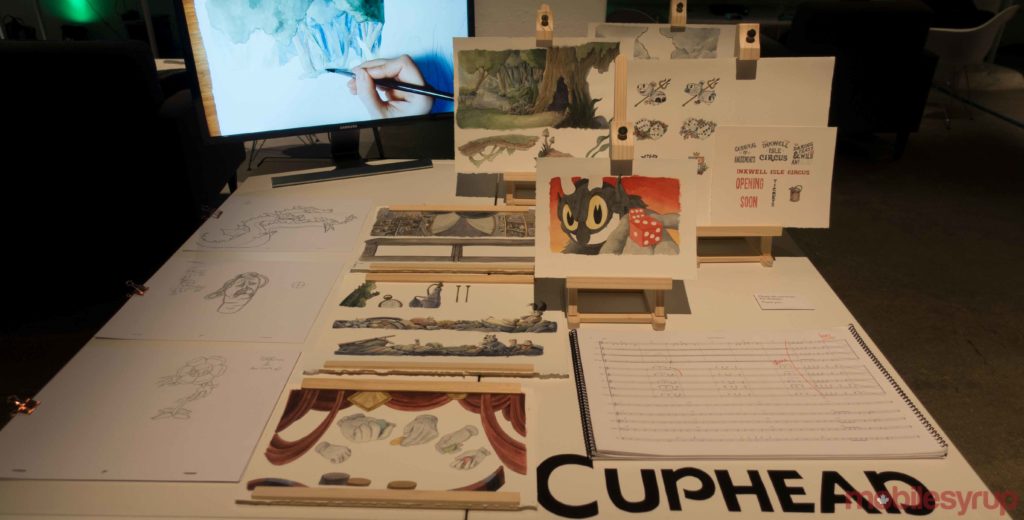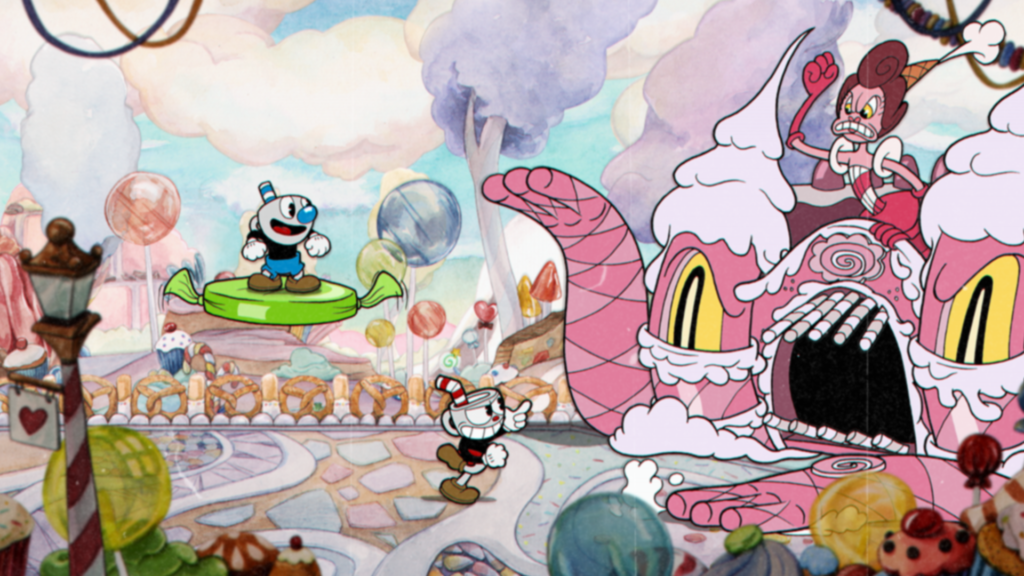
I’ll admit I’m not very good at platformers, particularly those of the 2D variety. Granted, I can at least complete tutorials with little trouble, but by and large this type of game just isn’t my forte, although I do enjoy playing them.
But since its announcement in 2014, I’ve been following along with Cuphead’s development. The small indie team of three Canadians (known as StudioMDHR) making this gorgeous-looking throwback to the 2D platformers of old, as well as classic animated black-and-white films? Colour me intrigued.
Interestingly, the game started off only featuring a handful of boss battles, with nothing in between to connect them all. While studio leads Chad and Jared Moldenhauer wanted to include more content, their initially small team simply couldn’t manage the extra development duties.
However, with the overwhelmingly positive reception to the game’s reveal — as well as some concern that it was lacking content — the Saskatchewan-born siblings quit their jobs, remortaged their homes and hired more staff to expanded the title. Eventually, this led to the addition of an overworld, run-and-gun levels, more boss fights and more.
Thankfully, the extra work has paid off, with Cuphead being one of the most brilliant and entertaining games of 2017.
The story follows Cuphead and his brother Mugman, who leave the comfort of their home to try their luck at the casino. Unfortunately, Cuphead ends up biting off more than he can chew, and the pair finds themselves at the mercy of the Devil himself, who happens to be the casino’s bookie. He offers to forgive their debts, provided they go after all of the other poor suckers who managed to find themselves indebted to the fiend.
From there, you’re off on an adventure to take on an assortment of wacky, over-the-top villains, ranging from scurvy pirates, man-eating vegetables and even Medusa herself. But the star of the show isn’t Cuphead, Mugman or even the larger-than-life foes they encounter, but rather, the overall presentation of the game. Quite simply, Cuphead is one of the most vibrant, aesthetically-pleasing and delightful-sounding games I have ever played.
The Moldenhauers have said the idea for Cuphead came out of their love of 1930s-era animation, citing Fleischer Studios’s Popeye and Disney’s Steamboat Willie as particular influences. To capture the essence of those classics, Studio MDHR painstakingly drew every frame by hand, which was later enhanced with excellent sound design.
The end result lends a stunningly distinct vintage film reel visual style, along with the occasional vinyl record-crackling sound, which all go a long way towards emulating the cartoons of long ago. Kristofer Maddigan’s accompanying soundtrack is equally stellar, filling Cuphead with all kinds of delightful jazz-infused tunes that will get you humming along.
You’d be forgiven in thinking Cuphead is a breezy game, given how lighthearted and innocent it may look at first glance. However, this belies what the game is truly about — difficult, oftentimes gruelling, boss encounters.
Gameplay-wise, Cuphead is able to shoot in eight directions out of his finger, on top of jumping, dashing and parrying, the latter of which is executed with a well-timed button press while airborne. You’ll also be able to unlock alternate weapons that are very useful in different circumstances, such as one that shoots weaker bullets, but in a larger spray in multiple directions.
Cuphead also has a special attack he can use once a bar is filled by shooting the enemy enough times. Finally, Cuphead can equip a skill to add bonuses to himself, such as increased health. Having the right ‘loadout’ — and knowing when to swap it out — is key when taking on certain bosses.
While I wouldn’t go so far as to say this is the “Dark Souls of platformers” in terms of difficulty, Cuphead is definitely immensely challenging. There are also some takeaways from the action-RPG series that you can apply to Cuphead. You only start off with three HP, with each hit taking subtracting one point. Your HP count can be increased via a skill later on, but regardless, you can only take damage a small number of times before you die. Therefore, it’s essential to study enemy patterns and adapt accordingly, as you would in a Souls game.
For example, an early fight against a slot machine has you at one point avoiding hurdled coins until you can hit the lever on its side to stop the maelstrom of money. However, this also gets the slots rolling, and depending on what comes up, the boss will use a different attack entirely. In cases like this, where attack combinations can be unpredictable, you’ll sometimes find yourself overwhelmed and ultimately defeated.
And yet, these never truly feel like failures since they can be learning experiences; with your new knowledge of the boss’ fighting behaviour, you can approach him again and feel more prepared. Unlike Dark Souls, boss fights are self-contained, relatively short encounters, so you don’t have to worry too much if you fail. Instead, you simply restart the fight, with no other progress lost.
The run-and-gun stages are also difficult and require a bit more planning than just zipping through them, contrary to what that moniker might suggest. A swarm of enemies on aerial and grounded enemies will keep you on your toes, while some foes can’t be killed, and instead recover shortly after you’ve shot them. There are only a small number of these levels, though, so it would have been nice if a few more were added in to offer a bit more variety from the bosses.
Studio MDHR has also added the great option for a second player to assume the role of Mugman for co-operative play. Unfortunately, I didn’t get a chance to try this out myself, so I’m not sure how this may affect the difficulty of boss fights. That said, in earlier preview events I’ve attended, I saw a couple of boss battles featuring two players that seemed to maintain the appropriate level of challenge.
In any case, having the option to play with someone else, especially with the often-unsupported method of couch co-op, is a welcome feature in Cuphead. The Moldenhauers also said they’re looking into adding online co-op functionality, which would be a nice way to further encourage playing with others.
Cuphead may have gone through many years of development and delays, but now that it’s finally here, it’s safe to say the game has delivered — and then some. An unparalleled visual and audio presentation, tight platforming controls and challenging enemy encounters make Cuphead one of 2017’s finest games.
Cuphead is available on Xbox One, Windows 10 and Steam for $25.99 CAD. The game is part of Microsoft’s ‘Xbox Play Anywhere‘ program, meaning you’ll only have to buy Cuphead once to play it on both Xbox One and Windows 10 at no additional charge.
MobileSyrup may earn a commission from purchases made via our links, which helps fund the journalism we provide free on our website. These links do not influence our editorial content. Support us here.







